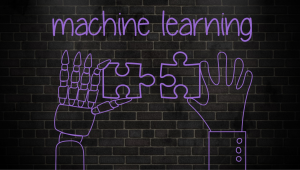Source – mediaupdate.co.za
Machine learning allows the algorithms that software and systems use to evolve as they process new data. Contrary to what many people think, humans play an integral role in this process and in applying machine learning-driven solutions to real-world problems.
Machine learning allows systems and AI engines to automatically learn and improve from experience. It is used to improve existing data processing systems or to create new software solutions.
Humans are closely involved in every step of producing technology that relies on machine learning. media updateunpacks the end-to-end role that humans play in machine learning, and how humans and AI complement one another.
Here’s a look at the numerous departments within a company that contribute to developing solutions powered by machine learning:
Sales and customer care teams
AI is currently a buzzword, with many companies experimenting with the capabilities of this ever-evolving technology. But, AI-powered solutions will only survive in the marketplace if they are purpose-built for a customer need, and that is why sales and customer care teams have to be involved in the development of the product.
“AI-powered solutions will only survive in the marketplace if they are purpose-built for a customer need.”
Salespeople and customer support teams deal with customers and clients, which means they are ideally positioned to identify specific consumer needs. This information is key to developing viable products, services, or solutions. This is especially true for developers of machine learning-driven solutions.
The role of these teams does not end at this point. Customers provide feedback on the products or solutions, and these insights can be used to improve the company’s offerings.
Developers, experts, and knowledge engineers
Once the clients’ needs have been established, IT development teams create the algorithms that form the basis of the machine learning system.
They gather relevant data from a number of sources inside and outside their company. Information and knowledge about the data are acquired from a subject matter expert, who is a specialist in the field related to the solution. Knowledge engineers enter this information into a knowledge base.
“Information and knowledge about the data are acquired from a subject matter expert, who is a specialist in the field related to the solution.”
An engine then creates models based on the data in the knowledge base. The development team evaluates the model that the engine has created and the results of new data it processes. They make necessary adjustments to the engine so that it processes the data correctly.
With this done, the technology is ready to be applied. It could be used in new software aimed at customers, such as automatic sentiment analysis of social media posts for media intelligence. Companies might apply the engine to their own internal systems to improve their data processing capabilities.
Marketers and creatives
Most solutions that make use of machine learning need a customer interface. User experience designers and graphic artists contribute to creating the navigation and design of this user-friendly platform.
With the machine learning solution in place, and working correctly, marketers brand the technology and find ways to make it attractive to customers. Machine learning-based offerings that are customer facing can fail without an effective marketing team who fully understand the capabilities of the solution.
Clients
Clients and customers are key to any business, and this is no different in the development of AI technology. Once clients are using the machine learning software, their feedback is vital to the development of the technology. Any shortcomings or errors they experience can help the developers improve the solution.
